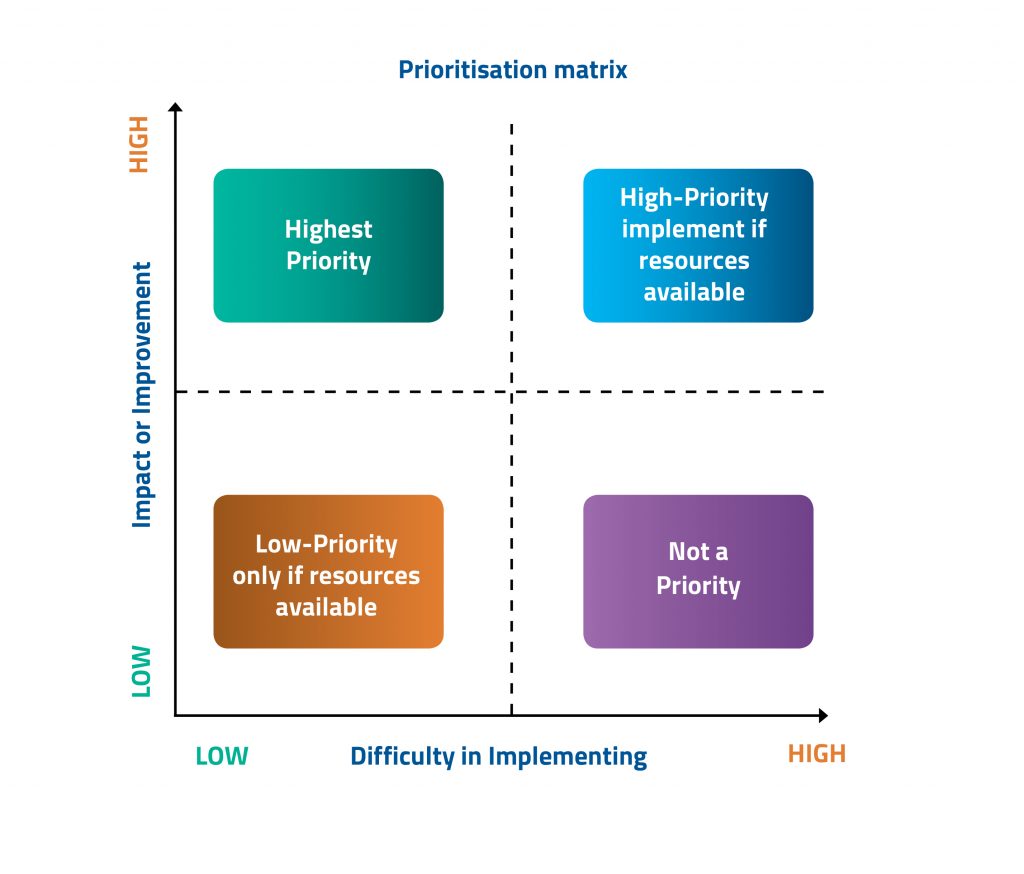How to put evaluation results into action: Prioritise for maximum impact

Grosvenor has published this series of three articles for program evaluation professionals and program managers faced with the challenge of putting evaluation results into action. This is the first article in the three part series.
The way evaluators develop, test and present recommendations has a huge impact on how improvements will finally manifest (if at all). Good recommendations and improvement opportunities identified during an evaluation are those that can be put into action. To maximise the impact and value of each evaluation, it is critical that program managers aren’t left asking ‘what next’ once the final report is delivered.
We’ve put together eight tips for evaluators and program managers to outline:
- What evaluators can do to maximise the impact of a report
- What program managers should expect from an evaluation.
Tip 1 – Assess all improvement opportunities: are they appropriate and best suited to the needs of the program /organisation?
In the final stages of an evaluation there are likely to be numerous ideas and possibilities about what is working well, and what could be done differently. Evaluators and program managers should critically assess and streamline these potential improvements to ensure the most appropriate ones are identified and actioned.
Ask these six questions about each improvement:
| Targeted? | Is it clear what the improvement is? Have you given enough detail? |
| Practical? | Is the improvement possible for your program? Does it consider the operating environment and unique circumstances of your program owner? |
| Resource realistic? | Are the required resources likely to be available? If an improvement is going to require more resources than your program owner has available it’s unfeasible and unlikely to generate a valid improvement. |
| Realistic? | Does it align with the capability of the organisation? Consider if specific skills are required to deliver the improvement and, if so, whether these are available. |
| Tailored? | Does it align with the program owner’s appetite for change? We often look at improvement opportunities from the perspective of helping program owners be the best they can; but we need to remember that improvement happens on a continuum. Challenge the program owner to improve, but don’t scare them into inaction. |
| Impactful? | Will it have the desired impact? Consider what the basis is for the improvement opportunity. Do you feel this is likely to succeed? What evidence do you have that it will produce the desired result? |
Tip 2 – Prioritise! Don’t present a ‘laundry list of ideas’.
Nobody wants to receive a list of 100 very detailed improvement opportunities! Prioritising improvements can be a win-win for evaluators and program managers by:
- helping the evaluator understand where their focus should lie in drafting the report
- eliminating low value recommendations
- providing clear next steps for the program manager
When prioritising recommendations, compare their respective impact and effort. Mapping each of your improvements against these factors provides a visual breakdown to inform best use of resources:

Tip 3 – Assess the cohesiveness of your recommendations
Consider the recommendations and improvements you have identified: Are they all aligned? Do they make sense collectively? Are there any dependencies or duplications?
Narrow down your list to focus on those which are critical and best reflect the key challenges raised during the evaluation.
Want to know more?
This is the first article in a series of three blogs focusing on how to put evaluation results into action. Read in the next articles about:
- Planning and communicating for maximum impact
- Promoting action beyond the evaluation – encouraging the use of findings beyond the final report
At Grosvenor, we believe that evaluation needs to be collaborative, accessible and support decisions and change that provide the best outcomes for our clients and their program stakeholders. No matter whether you are commissioning or delivering evaluations, get in touch with one of our consultants today to understand more about how you can maximise the impact and use of your evaluation findings.






